The biggest planet in our Solar System is the gas giant Jupiter. This planet is so big that it would take around 1.300 Earths just to fill its volume!
So how big is Jupiter actually? Well, Jupiter has a diameter of around 142.984 km / 88.846 mi at the equator, and a diameter of about 133.708 km / 83.082 mi at the poles.
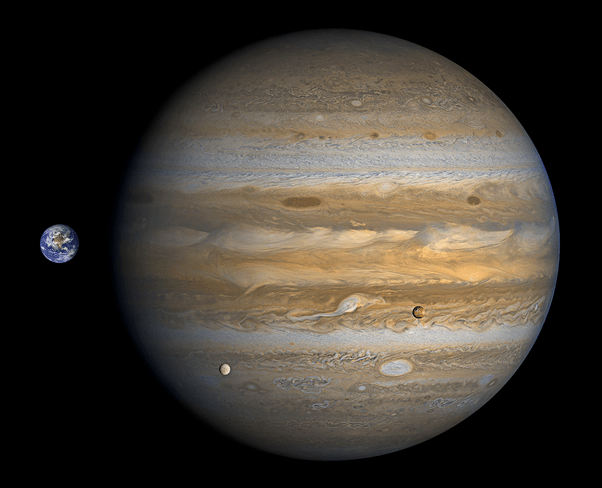
It has a mean radius of 69.911 km / 43.440 mi, and its mass is equivalent to 318 Earth masses. Jupiter has more than 11 times the diameter of Earth. Some scientists estimated that if Jupiter were more than 70 times more massive, it would have probably turned into a star rather than a planet.
Who knows, maybe in a parallel Universe, Jupiter ended up being the only star in our Solar System, and the Sun might have become a gas giant instead.
Is Jupiter Bigger than our Sun?
Jupiter may indeed be the biggest planet in our Solar System, but is it bigger than our Sun? No, the gas giant pales in comparison to our Sun.
Our Sun is 11 times wider than Jupiter. It has a radius of 696.340 km / 432.685 mi and a diameter of 1.39 million km / 864.000 mi. Jupiter, on the other hand, has a mean radius of 69.911 km / 43.440 mi, and a diameter of around 142.984 km / 88.846 mi at the equator, and a diameter of about 133.708 km / 83.082 mi at the poles.
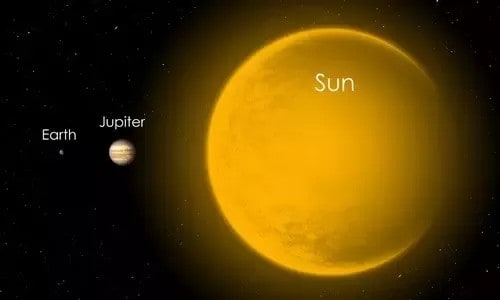
You could fill the Sun with 1,000 Jupiter-sized planets, so that is how small Jupiter is compared to our Sun. You know the saying, there is always a bigger fish.
Why is Jupiter so Big?
Jupiter is so big because it is the oldest planet in our Solar System. It formed around one million years after the Solar System. Since it was the first planet to form, it had some advantages.
These advantges are purely logical. The planets and the Sun formed through the swirling gas and dust from an interstellar medium, known as the solar nebula. Gravity pulled the swirling gas and dust together and resulted in either the Sun or the planets that followed.
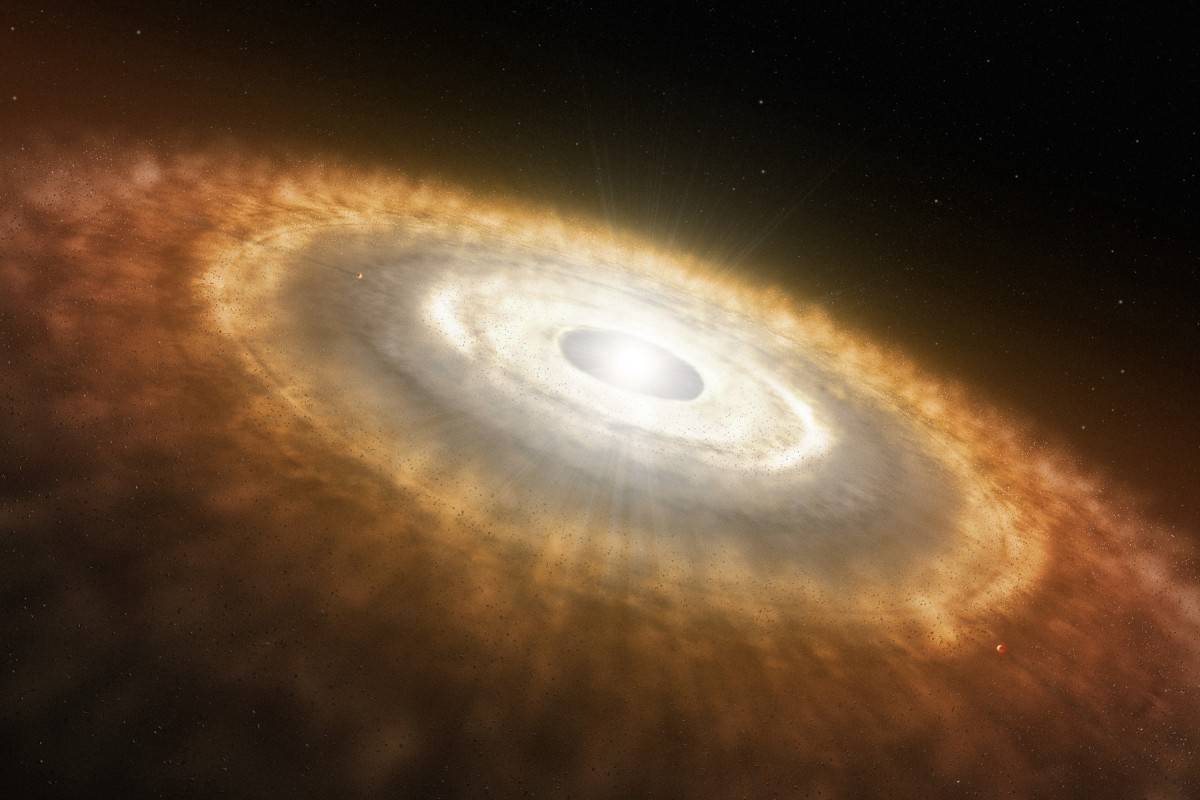
If Jupiter was the first planet to be formed, it had the power to gather more gas and dust within itself, which led to its huge physical proportions.
Any planet would have been in Jupiter’s position if it formed first out of the interstellar medium. The giant proportions of Jupiter were meant to be, and any planet might have been in the same position as Jupiter if it formed earlier than it.
What are five facts about Jupiter?
Since Jupiter is the biggest planet in our Solar System, it naturally captured our attention, even since ancient times. Here are five facts about Jupiter that you might not know:
1. Jupiter is the fourth brightest object in the sky
The planet Jupiter was observed since ancient times due to its luminosity in the sky. Because of this, no one can actually be credited for its discovery.
However, one man can be credited for first observing Jupiter through a telescope. That man is none other than Galileo Galilei. He conducted these observations in 1609 and 1610.
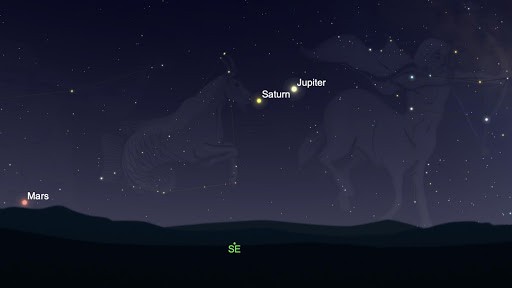
Galileo was also the man responsible for discovering Jupiter’s four biggest moons, namely, Io, Europa, Callisto, and the biggest moon in our Solar System, Ganymede.
These moons are often referred to as the Galilean Moons, in honor of Galileo Galilei. They played a significant role in our view of the Universe.
2. Jupiter is 90% hydrogen and 10% helium
Jupiter has a very similar composition to our Sun, being made out of 90% hydrogen and 10% helium. Some scientists consider Jupiter a failed star, while others dismiss this idea.
Jupiter is basically a floating ball of gas and dust; it doesn’t have a true surface. Scientists believe that the gas giant might have a solid surface, but it isn’t something certain.
3. Jupiter Dethroned
Jupiter was for a long period of time, considered the King of the Moons since it had 79 confirmed satellites orbiting around it. However, quite recently, Saturn was crowned as the King of the Moons, having 82 confirmed moons, and even more, await confirmation.
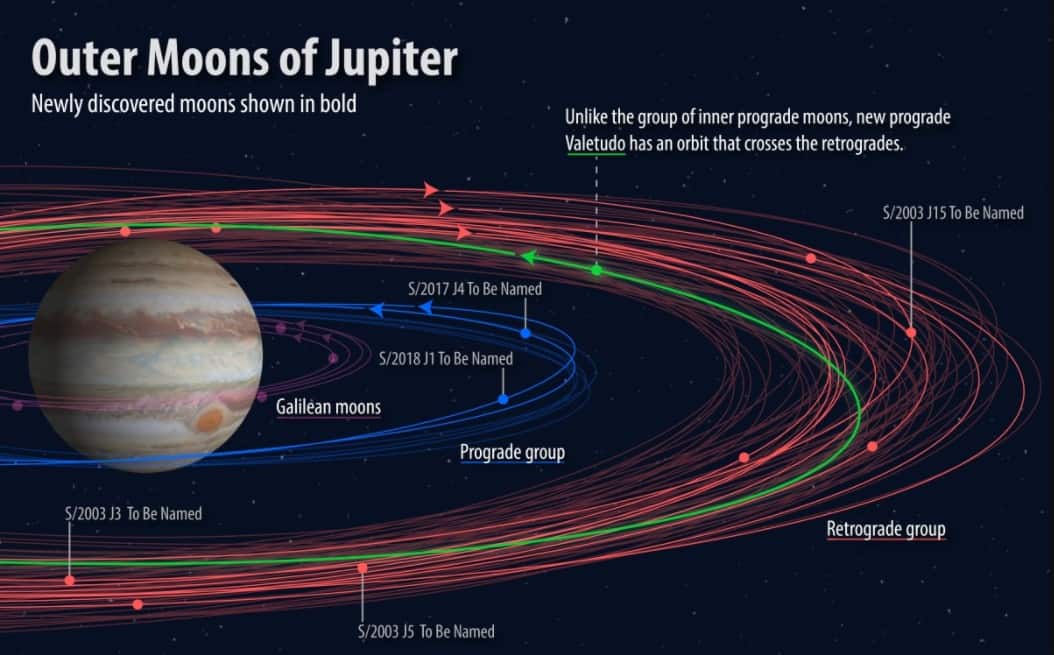
4. Jupiter has rings
Jupiter has rings just like Saturn, but as prominent obviously. In fact, all the planets, except for the terrestrial ones, have rings of dust surrounding them. It just so happens that Saturn is the most easily recognizable planet due to its rings.
The rings of Jupiter are quite faint, and 3 ring systems are surrounding the gas giant. These ring systems are made mostly out of dust and small rocky pieces.
5. Jupiter is surrounded by a plasma torus
When you think about traveling to other planets, it might not occur to you that even approaching certain planets can be dangerous. Now a great temperature will always be a warning sign, but in the case of Jupiter, the danger is more subtle.
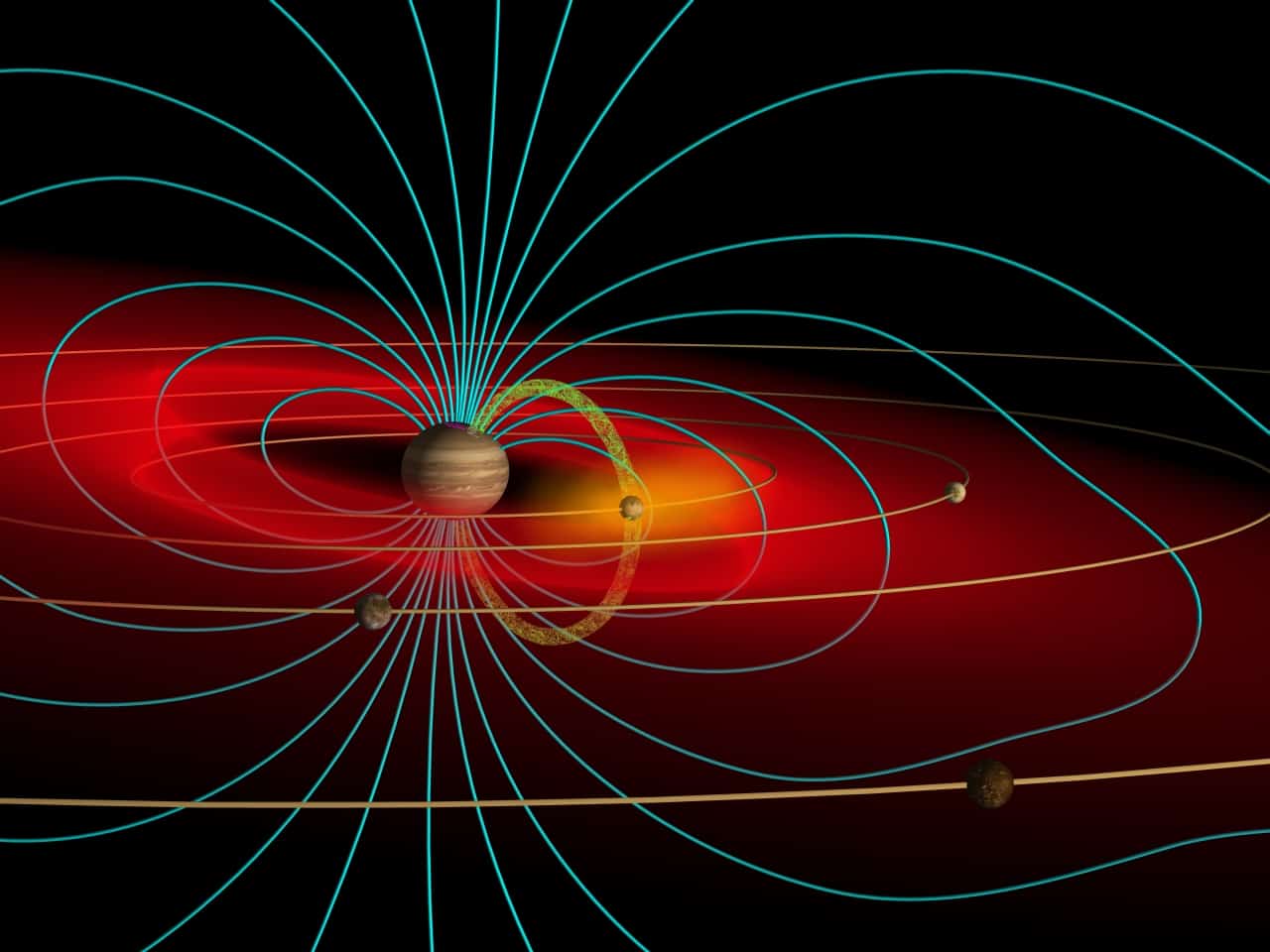
Jupiter is surrounded by a plasma torus that is produced by its extremely strong magnetic field. Jupiter’s magnetic field is 20 times stronger than Earth’s and 20,000 times larger.
The plasma torus around Jupiter is basically a field of extremely charged particles that can devastate a spacecraft or probe; however, there are some zones within this filed that are much safer. Scientists took advantage of these safe spots when they sent probes towards Jupiter.
Is there Life on Jupiter?
Currently, we do not know if there is life on Jupiter, or if it even can manifest itself there. Firstly, Jupiter is a big ball of hydrogen and helium, and it doesn’t have a true surface.
Life as we know it couldn’t evolve in such conditions. There may be floating microscopic organisms, but these are just suppositions. In any case, Jupiter is far too deadly for any lifeform that we currently know of to survive in its atmosphere.
Did you know?
- Io, one of the largest moons of Jupiter, is the most volcanically active celestial body in the Solar System.
- Jupiter has some of the brightest auroras in the Solar System; however, they can only be seen in the ultraviolet.
- Jupiter radiates so much heat that it actually shrinks 2 cm every year.
- Jupiter experiences up to 200 times more asteroid and comet impacts than Earth. It is sometimes called the vacuum cleaner because of this.
- Jupiter has both regular and irregular moons. One of its most studied moons is Europa, which is thought to host life, and an underground ocean.
- Many missions are planned for Jupiter in 2020 and 2026. They involve studying the gas giant’s most major moons, especially Europa and Io.
- When Jupiter first formed, it had at least twice the diameter it currently has today.
- If you weigh 100 pounds on Earth than on Jupiter, you would weigh 240 pounds. This is due to Jupiter’s powerful gravitational force.
- Jupiter is thought to be responsible for the Late Heavy Bombardment of the inner Solar System’s history.
Sources:
Image Sources:
- https://qph.fs.quoracdn.net/main-qimg-6662deb64f2dc6b896f44f7f49c3094d
- https://qph.fs.quoracdn.net/main-qimg-ab831aa48331761ab86f048948eb6872.webp
- https://miro.medium.com/max/2400/1*Y-_JLmwliWR1leTlk1iXHQ.jpeg
- https://cdn.mos.cms.futurecdn.net/AAs8uKLsNboLaqZCfsmUEK.jpg
- https://cdn.mos.cms.futurecdn.net/vKiBQqQdB5QEuPyhmBLYcg.jpg
- https://upload.wikimedia.org/wikipedia/commons/2/2d/Jupiter_magnetosphere_schematic.jpg
